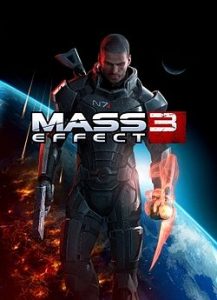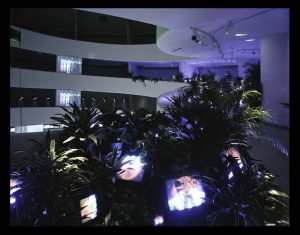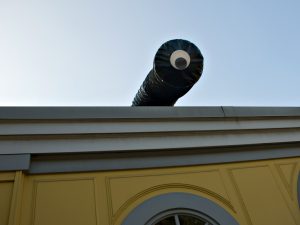Nintendo’s Legend of Zelda: Skyward Sword, for the Wii U, is a video game that I find especially inspiring. It includes majestic landscapes, floating castles, monstrous bosses, creepy monsters, adorable creatures, giant flying birds, sword fights, gorgeous temples and castles, and an incredible story. Nine people led the design of the game, organizing themselves into teams of writers, composers, designers, producers, and a director (Hidemaro Fujibayashi). The entirety of the game’s development process took five years. The main drive behind creating Skyward Sword was the creators’ feeling that they had not fully fleshed out the world of Legend of Zelda: Twilight Princess, and the need to create a Zelda game that was as well received and cherished as Ocarina of Time. Skyward Sword makes up for the flaws of Twilight Princess, and recreates the intrigue and beauty of Ocarina of Time. The creators of Legend of Zelda could work with virtual reality in the future and have the players fully immerse themselves into the beautiful worlds and landscapes and characters. They are currently in the process of developing a Zelda game for the PlayStation 4. Skyward Sword inspired me to pursue a minor in Game Design, because it showed me the incredible results (an entirely new universe full of crazy fantasy places and characters!) of incredible imagination.
Month: September 2016
Sadie Johnson Project-01-Face
project-01-face
sketch
The focus of my portrait was the everchanging mood and facial expression of myself.
function setup() {
createCanvas(360, 540);
}
//Canvas created in portrait format
function draw() {
background(213, 207, random(0,255));
//random background color in yellow hue expressing everchanging environment.
noStroke();
fill(165, 170, 247);
ellipse(180, 200, 200, 300);
fill(0);
beginShape();
curveVertex(160, 524);
curveVertex(160, 524);
curveVertex(180, 360);
curveVertex(300, 290);
curveVertex(360, 180);
curveVertex(360, 180);
endShape();
//Curvature rather expressing the soul than the body.
fill(200, 100, 100);
triangle(110, 140, 127, 160, 90, 156);
rect(200, 155, 70, 20, 1, 10, 20, 30);
fill(0);
ellipse(110, 200, 20, 20);
ellipse(250, 190, 25, 40);
fill(150, 243, 99);
triangle(170, 210, 175, 240, mouseX, mouseY);
//nose symbolises one's ego, which is never concrete, changing by circumstances.
strokeWeight(40)
stroke(255, 180, 0);
fill(100, 200, 10);
arc(170, 310, 100, 80, 10, 50);
}
function mousePressed() {
loop();
}
function mouseReleased() {
noLoop();
}
//the ability to start and stop the whim, expressed through stopping of loop.kwburges-01-face
function setup() {
createCanvas(600, 600);
}
function draw() {
background(51,0,51);
//hair
fill(30,0,0)
ellipse(250,250,75,100)
ellipse(215,280,25,50)
ellipse(280,280,25,50)
//body
fill (0,0,153)
ellipse(250,375,100,200)
//face
fill (255,178,102)
ellipse (250,250,70,70)
//eyes
ellipse(240,250,10,10)
ellipse(260,250,10,10)
fill(0)
ellipse(240,250,5,5)
fill(0)
ellipse(260,250,5,5)
//mouth
arc(250, 270, 10, 20, 0, PI+QUARTER_PI, OPEN)
//balloons
fill(245,0,0)
ellipse(400,200,55,55)
fill(30,40,200)
ellipse(425,190,55,55)
fill(255,0,127)
ellipse(380,150,55,55)
line(375,170,330,280)
fill(255)
ellipse(390,240,55,55)
fill(255,128,0)
ellipse(350,195,55,55)
//arms
rect(200,320,10,10)
rect(290,320,10,10)
rect(300,310,10,10)
rect(310,300,10,10)
rect(320,290,10,10)
rect(330,280,10,10)
rect(190,330,10,10)
rect(180,340,10,10)
rect(170,350,10,10)
rect(160,360,10,10)
rect(170,370,10,10)
rect(180,380,10,10)
rect(190,390,10,10)
//balloon strings
line(350,220,330,280)
line(363,240,330,280)
line(380,265,330,280)
line(410,210,330,280)
}
SadieJohnson- Looking Outwards 01

I most admire the action RPG game Mass Effect, a video game developed by Bioware and published by EA games. I admire it because it was the first game I played that showcased the artistic side of video games, such as character design, writing, and musical composition. Mass Effect inspired me to follow my love of game design, and enter a field I had once deemed “too technical”. Because it is a triple-A game, there were about 300 developers working on it and it took two years to complete. Like many big-budget video games, it was made on an engine- in this case, Unreal Engine 3. Dungeons and Dragons influenced the interactive storytelling, while Star Wars helped inspire the writing and sci-fi artists like Syd Mead. This project points to a future of more refined storytelling in video games, better graphics and heavier investment in story and art.
Janet Lee- Looking Outwards-01
As I was living in Korea, I came across this artist called Nam June Paik. His artwork and his philosophy “touch my art like it’s your toy” caught my attention. He is well known for his video/media art. Out of his whole projects, I liked “Tv Garden” which was produced by about thirty televisions lying by tropical leaves. It was interesting to me that he combined television and nature without a definite meaning to it. I do feel like this project would have been more effective if the tv screens included a lot more scenes of nature. Though, I also feel like he intentionally excluded a lot of nature scenes to make people question about his work. Paik once wrote that he wanted “to shape the tv screen as precisely as Leonardo and as freely as Picasso”. His purpose of his work was to not conform his work in a traditional way but to freely express himself.

https://www.arts.gov/photos/nam-june-paik-artist-who-invented-video-art
http://www.medienkunstnetz.de/works/tv-garden/images/2/
http://www.variablemedia.net/f/introduction/case_paik_tvgar.html
JamesKatungyi-LookingOutwards-1
The hortum machina is a dynamic geodesic space frame driven by plant reaction to external stimuli. Plant trays at the core of the frame move outwards when the driving system detects plant need for light. The tray movement displaces the space frame’s center of gravity causing the frame to roll.
The hortum machina explores an organic engine for dynamism in the mostly static field of buildings structures. It portends a future of dynamic building elements.
The use of multiple sensors to measure the electrophysiological state of the plants and thereby trigger movement of the plant trays is impressive.
In its current state, however, it is still an unwieldy and unsafe prototype with no conceivable direct application.
The project makers based their creation on Buckminster Fuller’s 1968 publication ‘Operating Manual for Spaceship Earth’ about sustainable use and care of the earth’s finite resources; going further to explore interaction between people and nature.
JihoonPark-LookingOutwards-01
I encountered one of these grotesque videos by Albert Omoss upon scrolling through an Instagram art page, with eyes half open from the sleep only waiting for the right moment to kick in after midnight. The series of gif’s with melting down human figures came to me as an unexpected disturbance.
Famous for renders of disfiguring people, Omoss seeks to challenge the modern day achievements by often showing how indefensible we are in nature, and thus connecting concepts of technology and humanity to find mutual relationship between the two.
Though many of his videos are abhorrent at first sight, the messages and the interpretation found underneath the skin is what makes people as well as myself keep looking for more.
The cynical mood Omoss conveys in unraveling in his works stimulates viewers to doubt the use of all the secular problems and come back to the existentialist reality. Like shown in his work “Entangle,” the two lovers embracing each other and finally reaching for the heart reminds us all that in the bottom line, love is is the desire to be close to each other, and nothing else.
Omoss continues to reveal the very basic values of human existence. Wealth, Fame, Status, etc. None of them means anything when we are stripped down to our bare skins. Nothing, but only humans, letting us care about what really matters-love, friends, thought.
SiminLi-LookingOutwards-01
 The Snout is a robotic arm with a googly eye on top that reacts to human movement by doing what seems like a double take. This project was done by Golan Levin, Lawrence Hayhurst, Steven Benders and Fannie White in 2008. It took 5 months and dealt with difficult problems like getting the 600-kilo robot on the roof for display. The software for this robot was developed in 3 weeks using toolkits such as openFrameworks. Professor Levin explains that thisproject was inspired by a performance by Mummenschanz when he was 6 years old. The performers were dressed in worm like tubes that look similar to The Snout. What is interesting about this interactive project is that it causes the illusion that it is confused. It is difficult making an animated character seem confused in a normal setting, not to mention doing what professor Levin calls “real-time animation” with a huge robot. This project addresses only one emotion. In future projects, robots should be able to display other emotions like joy, anger, sadness and fear etc. This may be a difficult task, requiring artists, computer scientists and Psychologist to work together, but something like The Snout project had been done almost 50 years ago. In 1970, Edward Ihnatowicz made a robot called “Senster” that turned to you when you clapped. It was a simple reaction but it shed light on what we are able to do with the technology we have today.
The Snout is a robotic arm with a googly eye on top that reacts to human movement by doing what seems like a double take. This project was done by Golan Levin, Lawrence Hayhurst, Steven Benders and Fannie White in 2008. It took 5 months and dealt with difficult problems like getting the 600-kilo robot on the roof for display. The software for this robot was developed in 3 weeks using toolkits such as openFrameworks. Professor Levin explains that thisproject was inspired by a performance by Mummenschanz when he was 6 years old. The performers were dressed in worm like tubes that look similar to The Snout. What is interesting about this interactive project is that it causes the illusion that it is confused. It is difficult making an animated character seem confused in a normal setting, not to mention doing what professor Levin calls “real-time animation” with a huge robot. This project addresses only one emotion. In future projects, robots should be able to display other emotions like joy, anger, sadness and fear etc. This may be a difficult task, requiring artists, computer scientists and Psychologist to work together, but something like The Snout project had been done almost 50 years ago. In 1970, Edward Ihnatowicz made a robot called “Senster” that turned to you when you clapped. It was a simple reaction but it shed light on what we are able to do with the technology we have today.
See 38:15 — 42:51 for details.
http://www.flong.com/projects/snout/
Many thanks to Professor Golan Levin.
Project01-Face Sofia Syjuco
// Sofia Syjuco
// Section A, 9:30-10:20AM
// smsyjuco@andrew.cmu.edu
// Project01-Face
function setup() {
createCanvas(600, 600);
background (237,239,228);
}
function draw() {
noStroke ();
// hair back
fill (46,29,6);
ellipse (300, 340, 200, 300);
// face
fill (210,180,140);
ellipse (300, 300, 160, 200);
// hair front
fill (46,29,6);
ellipse (300, 248, 180, 100);
// eyes
fill (255,255,255);
ellipse (260, 320, 40, 20);
ellipse (340, 320, 40, 20);
fill (46,29,6);
ellipse (260, 320, 10, 10);
ellipse (340, 320, 10, 10);
// nose
fill (231,133,111);
ellipse (300, 340, 15, 20);
//mouth
fill (179,73,55);
ellipse (300, 370, 27, 12);
//neck
fill (210,180,140);
rect (285, 390, 30, 40);
// shirt
fill (0,0,0);
rect (200, 430, 200, 100);
}
I learned a lot about using different shapes in this project, and especially about placing them in the canvas. I ran into some difficulties embedding it, but I figured out that any fill colors that used strings ignored the strings, and used the color values of whatever was color filled before. I’m overall very pleased with the outcome, as it taught me a lot, and I think gave me a solid foundation for further works.
![[OLD – FALL 2016] 15-104 • COMPUTING for CREATIVE PRACTICE](https://courses.ideate.cmu.edu/15-104/f2016/wp-content/uploads/2020/08/stop-banner.png)